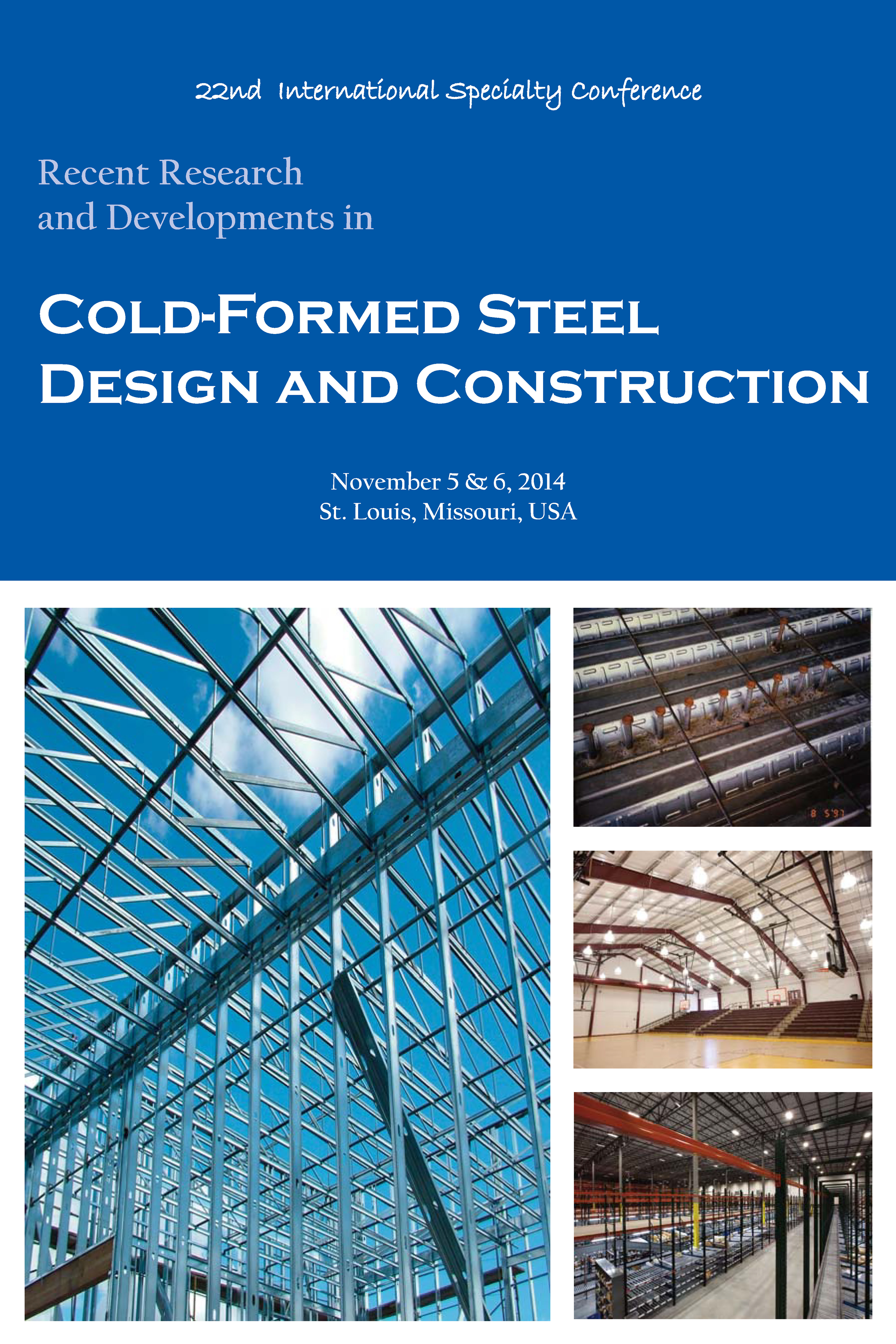Session Dates
05 Nov 2014
Abstract
In this paper flexural buckling of thin-walled members with holes are discussed. Members with few but large openings, as well as with slotted webs are studied. Large number of finite element analyses has been performed, by using a carefully constrained shell finite element model in order to exclude the distortion of the cross-section, which makes it possible to analyze flexural buckling separately from other modes. Based on the results general conclusions are drawn regarding the global behavior of members with holes. Moreover, analytical models are developed for column members with slotted webs, with neglecting or with considering the effect of shear deformations. The proposed analytical models are the adaptation of the shell-theory-based analytical models proposed by the authors earlier.
Department(s)
Civil, Architectural and Environmental Engineering
Research Center/Lab(s)
Wei-Wen Yu Center for Cold-Formed Steel Structures
Sponsor(s)
Hungarian Scientific Research Fund
Meeting Name
22nd International Specialty Conference on Cold-Formed Steel Structures
Publisher
Missouri University of Science and Technology
Document Version
Final Version
Rights
© 2014 Missouri University of Science and Technology, All rights reserved.
Document Type
Article - Conference proceedings
File Type
text
Language
English
Recommended Citation
Geleji, B.; Szedlák, M.; Visy, D.; and Ádány, S., "Understanding the Global Buckling Behavior of Thin-Walled Members with Slotted Web" (2014). CCFSS Proceedings of International Specialty Conference on Cold-Formed Steel Structures (1971 - 2018). 4.
https://scholarsmine.mst.edu/isccss/22iccfss/session01/4
Understanding the Global Buckling Behavior of Thin-Walled Members with Slotted Web
In this paper flexural buckling of thin-walled members with holes are discussed. Members with few but large openings, as well as with slotted webs are studied. Large number of finite element analyses has been performed, by using a carefully constrained shell finite element model in order to exclude the distortion of the cross-section, which makes it possible to analyze flexural buckling separately from other modes. Based on the results general conclusions are drawn regarding the global behavior of members with holes. Moreover, analytical models are developed for column members with slotted webs, with neglecting or with considering the effect of shear deformations. The proposed analytical models are the adaptation of the shell-theory-based analytical models proposed by the authors earlier.




Comments
The presented work was conducted with the financial support the OTKA K108912 project of the Hungarian Scientific Research Fund.